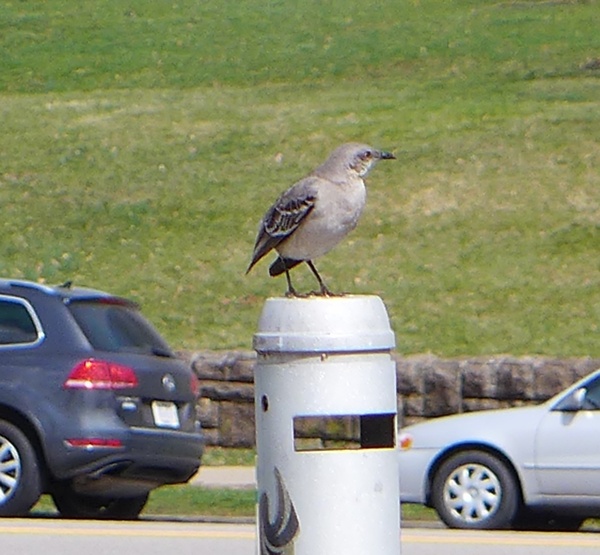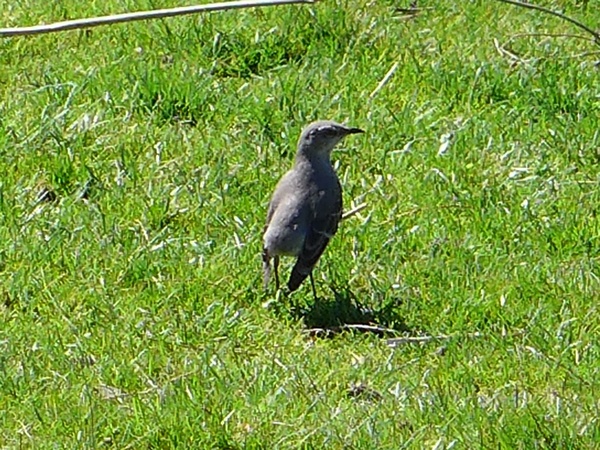
There’s a bossy northern mockingbird near Phipps Conservatory who shouts his song and chases all the birds but he’s missing something — his long expressive tail.
Tails are used in flight, of course, but they’re also an important communication tool for mockingbirds.
“Look at me!” says the mockingbird as he struts with his tail cocked up, wags it to one side during confrontations, and fans it in his parachuting flight display.
Without a tail he looks silly, drooping his wings while he raises his tiny tail coverts. So far the ladies aren’t impressed.

I wonder how long it will take to grow back his tail.
For courtship purposes, it better be soon!
(photos by Kate St. John)
The mockingbirds by the Pitt Union lost one of their favorite perches, the bushes by the Athletic Association that were ripped out for the construction trailers for the new hotel. I thought that was a loss, even if it did mean they wouldn’t sit there and shout over all the traffic. I’ve seen them around though lately. This guy has lost a lot more!
How does this affect his flight?
Judy, he flies well enough but not elegantly.
When one of our cockatiels escaped outside at a point that their wings needed clipping, my husband ran down the street and grabbed the only thing available, the tail feathers. They all ripped out but the bird was saved!! (We have never lagged on wing clipping since.) It took a few months but they all grew back nicely. I would expect the same here.
lol poor thing! he does look silly but he’s still working it ??
We have a pair of mockingbirds living in a Strip District parking lot bush/trees. I was wondering why they would choose this habitat for the past 3 years? There doesn’t seem to be much around to attract other birds. Any ideas?
Sue, studies of northern mockingbird nest success indicate that the most successful nests are in trees or shrubs that are isolated from other vegetation. The widely spaced landscaping in a parking lot probably looks perfect to them. (info is from Birds of North America Online)